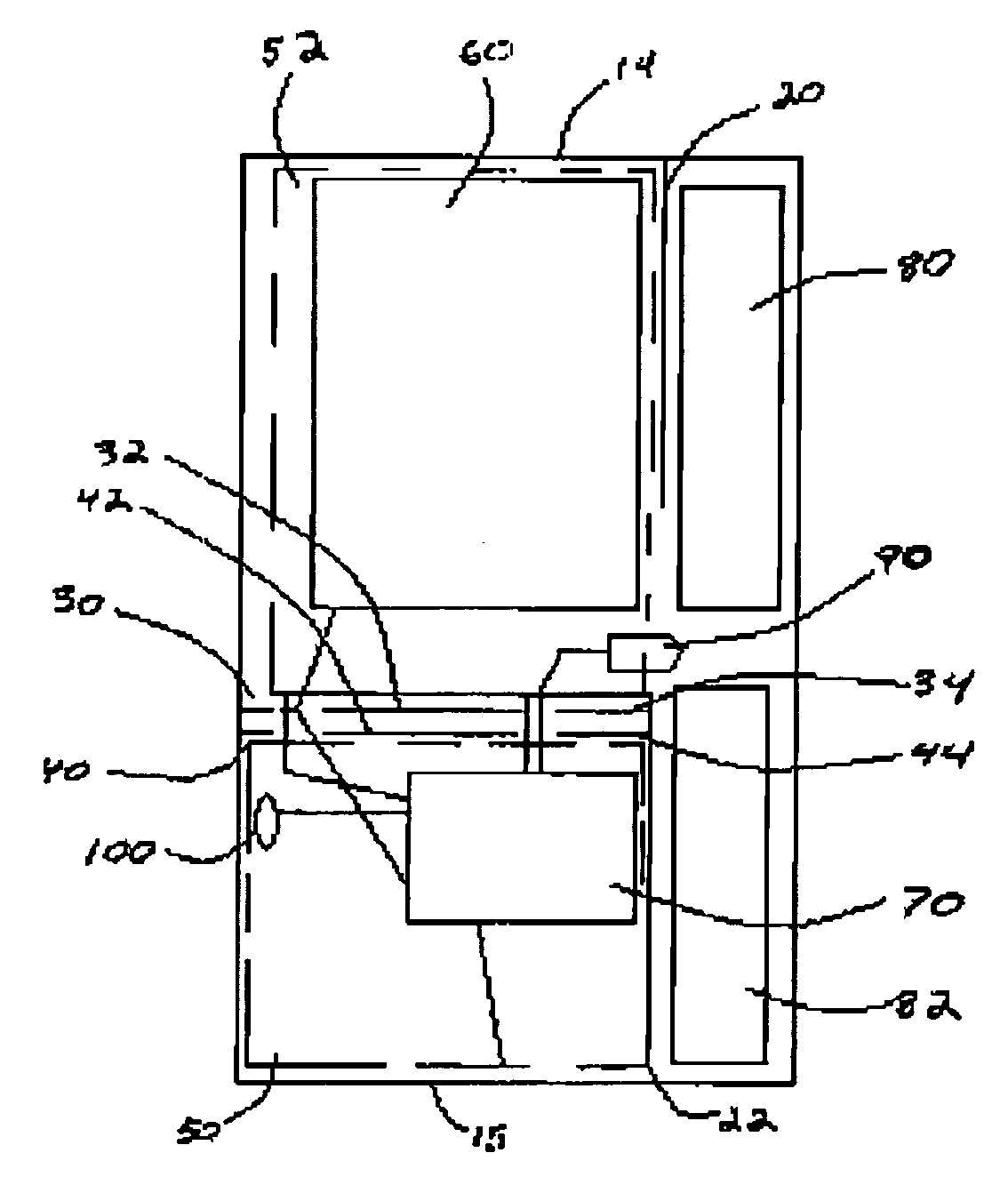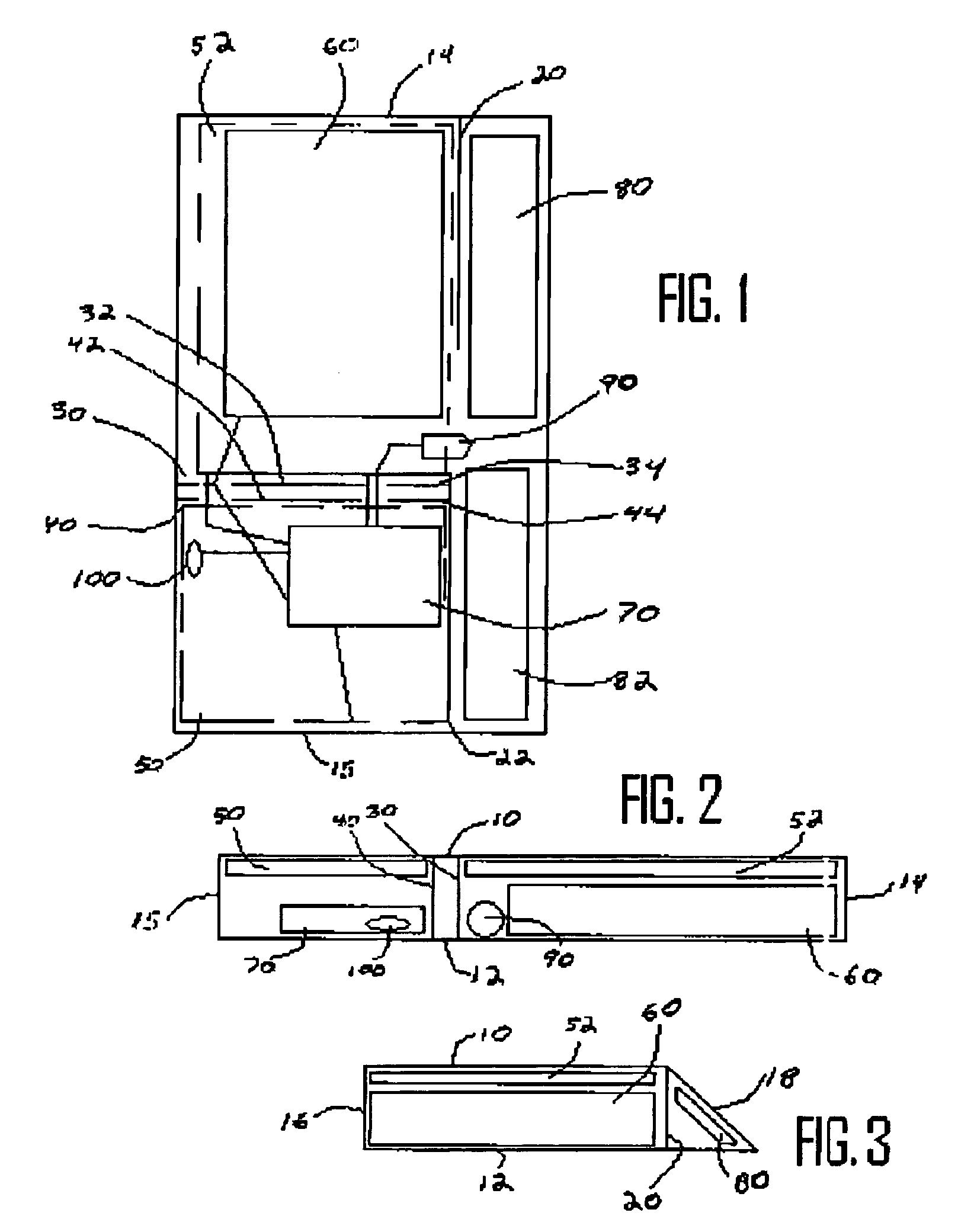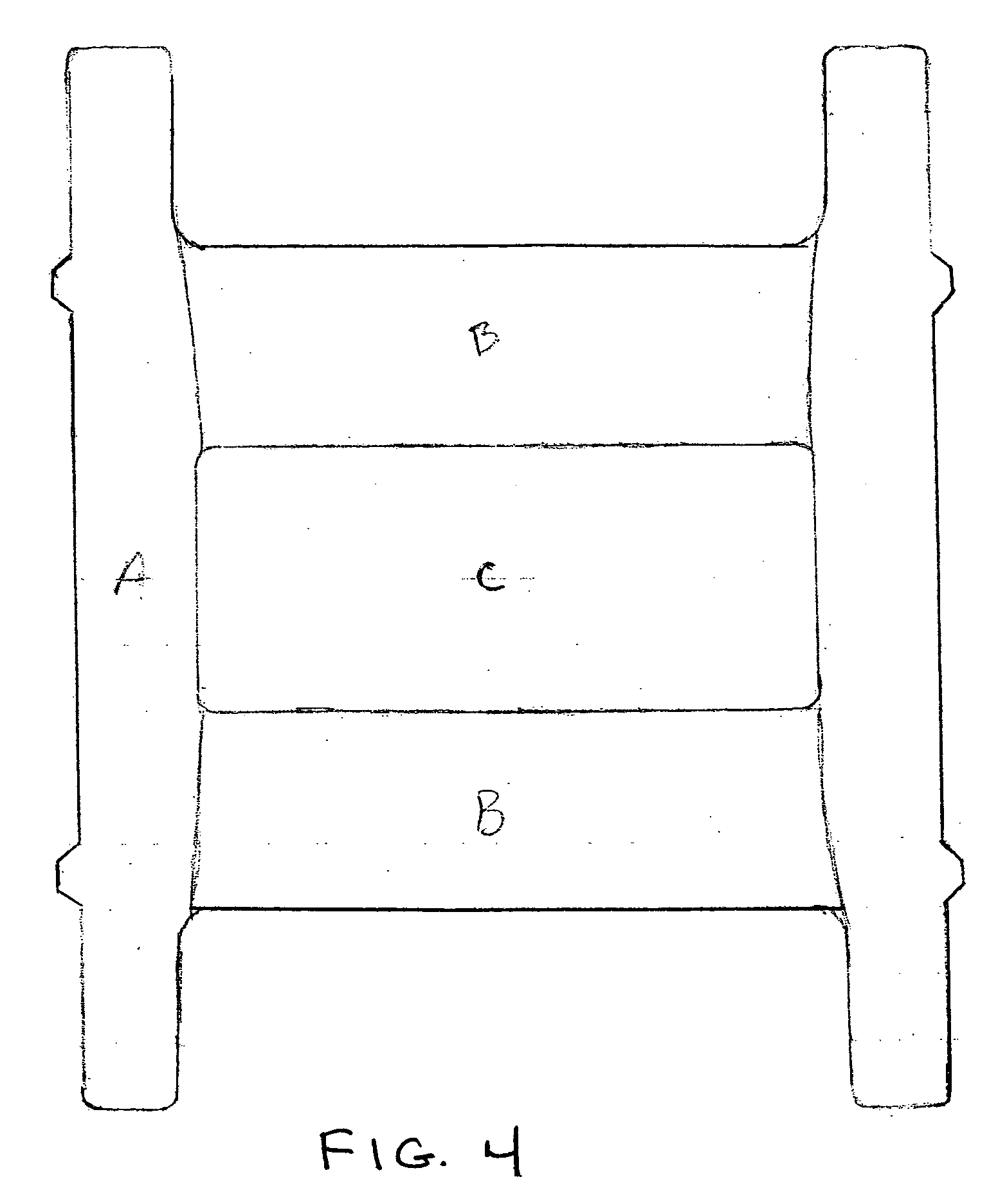Wireless reflective marker with internal light source
a technology of reflective markers and light sources, applied in road signs, roads, construction, etc., can solve the problems of reducing the visibility of reflectors, reducing the capability of retroreflectors at distances, and devices involving external wiring, and achieve cost-effective effects
- Summary
- Abstract
- Description
- Claims
- Application Information
AI Technical Summary
Benefits of technology
Problems solved by technology
Method used
Image
Examples
example
[0048] In an example of an embodiment of the invention, shown in FIGS. 1-3, the front face 18 of a marker 5 is at a diagonal from the horizontal. In an embodiment the angle of the front face is 20-40 degrees from horizontal. The front face 18 has a width of no more than approximately 4 inches and preferably approximately 4 inches. The front face 18 has a length of approximately 12 / 16- 14 / 16 of an inch and preferably approximately 13 / 16 of an inch. The top face 10 and the bottom face 12 of a marker are generally horizontal and parallel to each other. The top face 10 and bottom face 12 each have a width between side faces 14 and 15 of no more than approximately 4 inches and preferably approximately 3¾-4 inches. The bottom face 12 has a width of no more than approximately 2 inches and preferably approximately 1⅞-2 inches. The top face 10 has a width of no more than approximately 1⅜ inch and preferably approximately 1¼-1⅜ inch. Side faces 14 and 15 of a marker are generally horizontal a...
PUM
 Login to View More
Login to View More Abstract
Description
Claims
Application Information
 Login to View More
Login to View More - R&D
- Intellectual Property
- Life Sciences
- Materials
- Tech Scout
- Unparalleled Data Quality
- Higher Quality Content
- 60% Fewer Hallucinations
Browse by: Latest US Patents, China's latest patents, Technical Efficacy Thesaurus, Application Domain, Technology Topic, Popular Technical Reports.
© 2025 PatSnap. All rights reserved.Legal|Privacy policy|Modern Slavery Act Transparency Statement|Sitemap|About US| Contact US: help@patsnap.com



